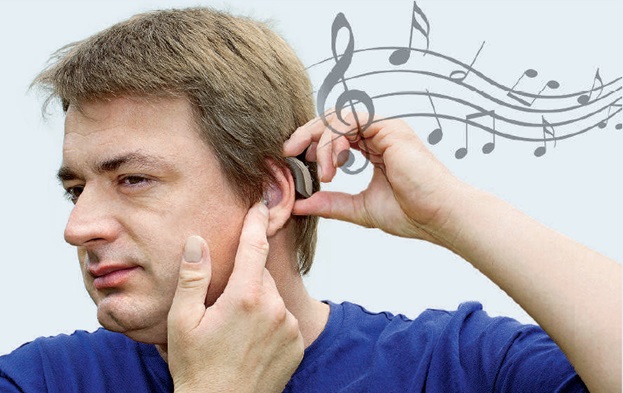New Hearing Aids And
Audiophiles (Part 1)
Users complain often that hearing aids make music sound terrible

Age-related
hearing loss– known medically as presbycusis – used to be considered just that:
an inevitable part of the ageing process. Study of remote tribes has shown that
in fact this isn’t the case. Hearing loss isn’t an inevitable consequence of
getting older; rather, it’s another disease of Western industrial civilisation,
caused by lifelong exposure to types and intensities of sound that are not
encountered on the savannahs or in the jungle. The message is: look after your
hearing and you are much more likely to enjoy good hearing acuity into old age.
Music
typically has a wider bandwidth, higher intensity and greater crest factor than
speech
What
can be done?
Unfortunately,
such advice is of no use to audiophiles who already have hearing difficulties –
due either to presbycusis or other medical conditions – and whose enjoyment of
music is being affected as a result. Hearing aids can certainly bring marked
improvements to speech intelligibility but users often complain that they make
music sound terrible. So what can be done? Is there such a thing as an
audiophile hearing aid? And are there any tricks to help conventional aids
perform better on music? Surprisingly, there is relatively little that has been
published on the sound quality of hearing aids from an audiophile perspective.
But in 2006 the website Secrets of Home Theater and High Fidelity published an
article by Wayne Sarchett, ‘Hearing Aid Issues for the Hearing Impaired
Audiophile’, which made for grim reading In it Sarchett reviewed a selection of
analogue and digital hearing aids reproducing music replayed over loudspeakers,
with the ‘old technology’ analogue aids – usually discontinued or being phased
out – generally far outperforming their digital successors. Until somebody
performs a similar exercise with the latest generation of hearing aids – and it
is hard to do that properly as it would require each
to be optimally configured for whoever does the listening – it is difficult to
say where we stand eight years later. But the academic literature shows that
greater consideration is now given to hearing aid performance on music, and
that there is a more complete understanding of what is required to make hearing
aids that can satisfy audiophiles and musicians. As a result, hearing aid
manufacturers have begun to take the requirements of the hearing impaired music
lover more seriously.

Two types
of telecoil neckloop which allow reproduced music to be played via hearing aids
having a T (inductive loop) setting. The first plugs into an audio source via a
mini jack plug; the second, costlier type connects wirelessly to Bluetooth
devices. The wire loop around the neck generates a fluctuating magnetic field
received by the hearing aid.
Going direct
There are two separate strands to this story, according to whether
the music is live or reproduced. With live music it is the performance of the
hearing aid via its microphone that determines the resulting quality, whereas
with reproduced music it is possible to bypass the microphone circuits. The
latter is achieved by conveying sound directly to the aid using the telecoil
inductive loop sensor normally included in behind the- ear or in-ear hearing
aids (but not CIC, Completely In Canal, types because they are too small) or
else via the Bluetooth wireless interface. The telecoil option has the twin
advantages of being inexpensive to implement and universal. Carefully realised
and in ideal circumstances, it is also capable of good sound quality. To listen
to music sources the user has to wear a neckloop which receives the audio
signal from an FM or infra-red transmitter to which the source is connected,
and then re-broadcasts the telecoil signal to the hearing aid.

Using
headphones to listen to music is one way of overcoming frustrations with
hearing loss. As headphones vary in tonal balance there’s a good chance of
finding a pair that will 'match’ you.
The telecoil’s significant downside is that it is sensitive to
electromagnetic interference from items like mobile phones, TVs and fluorescent
lights, which can result
in distracting buzzing noises. The best modern
telecoil implementations have superior rejection of this interference, and it can often be lessened by sitting well away from the interference source(s) – but it can still prove a problem, particularly when listening to music of wide dynamic range.